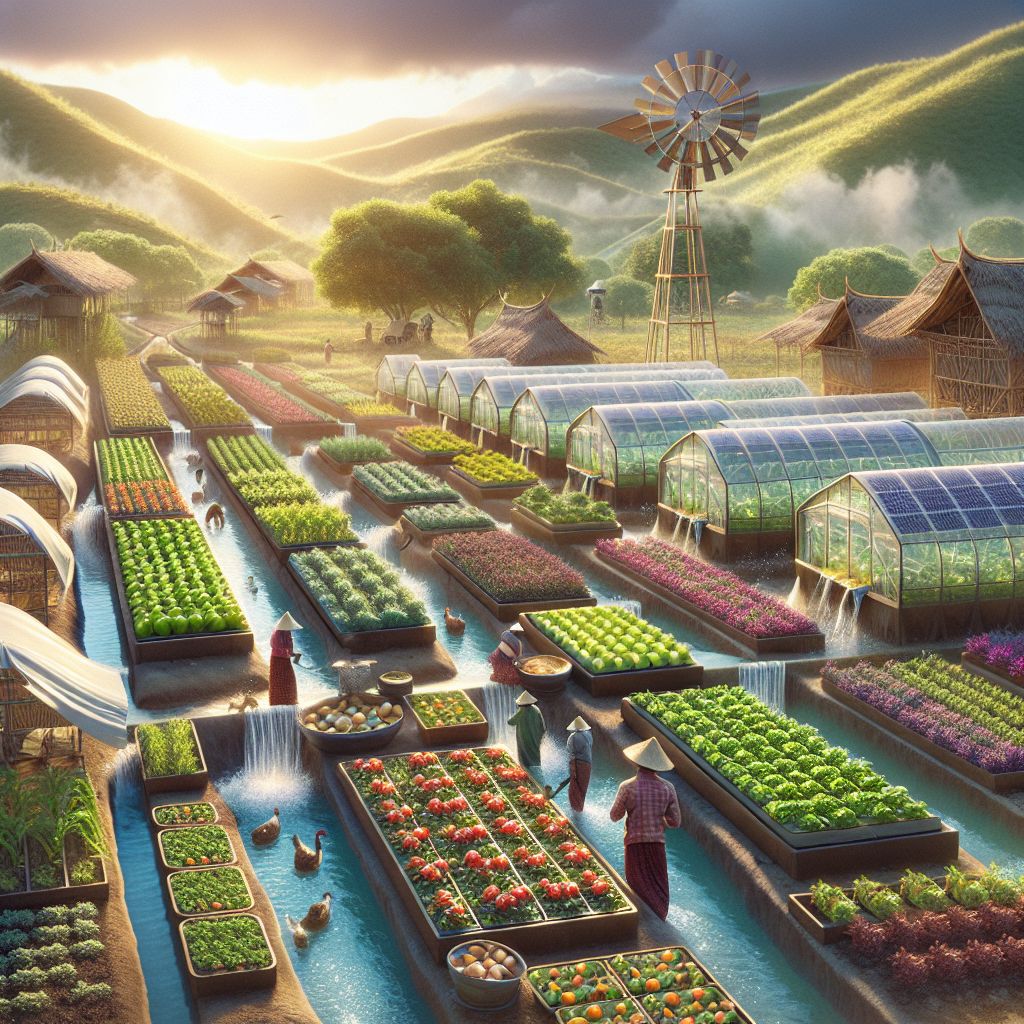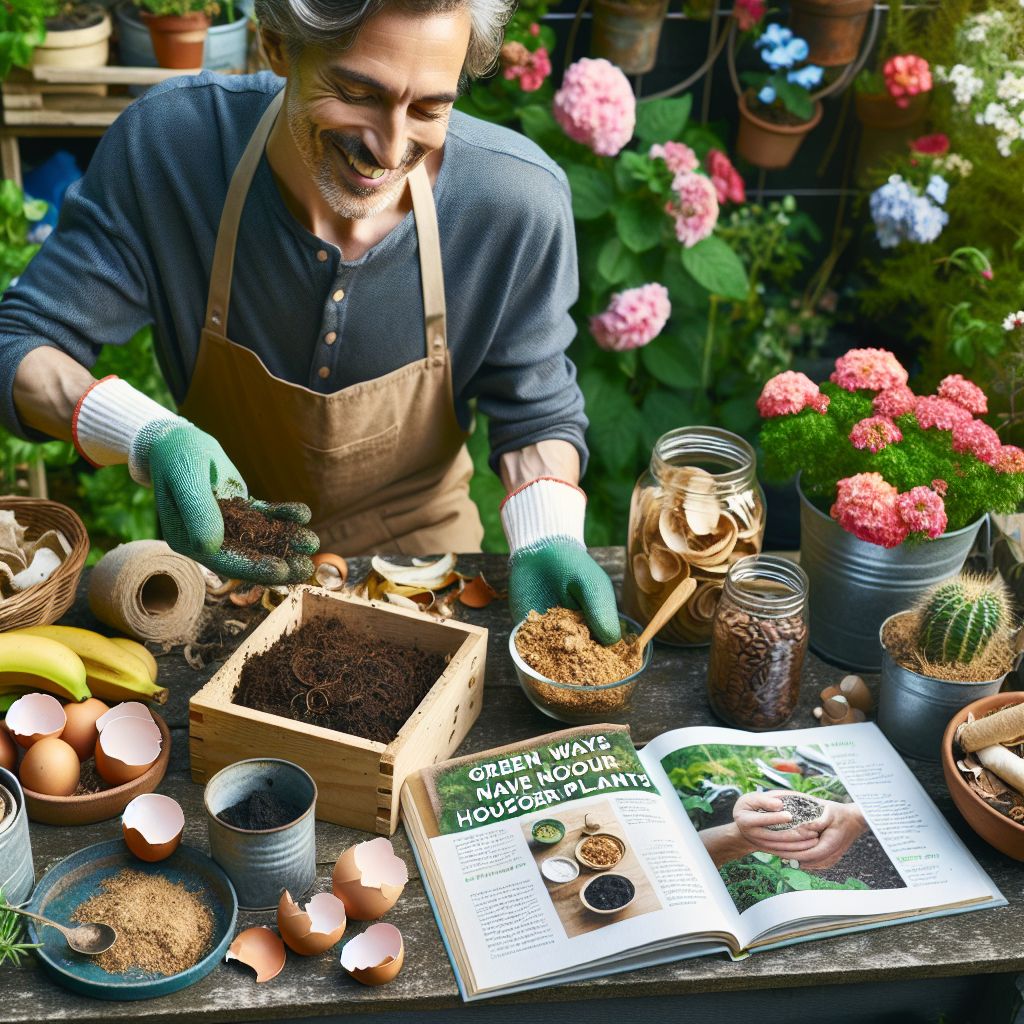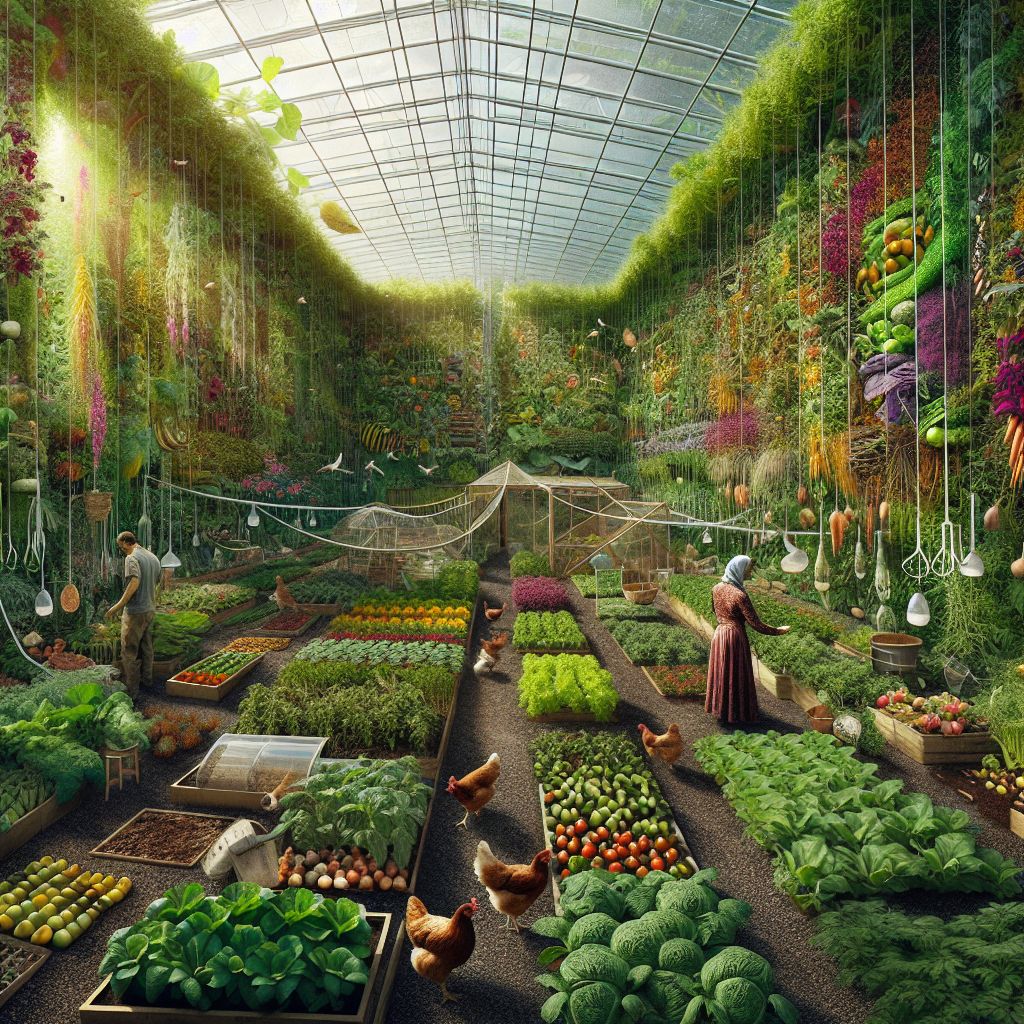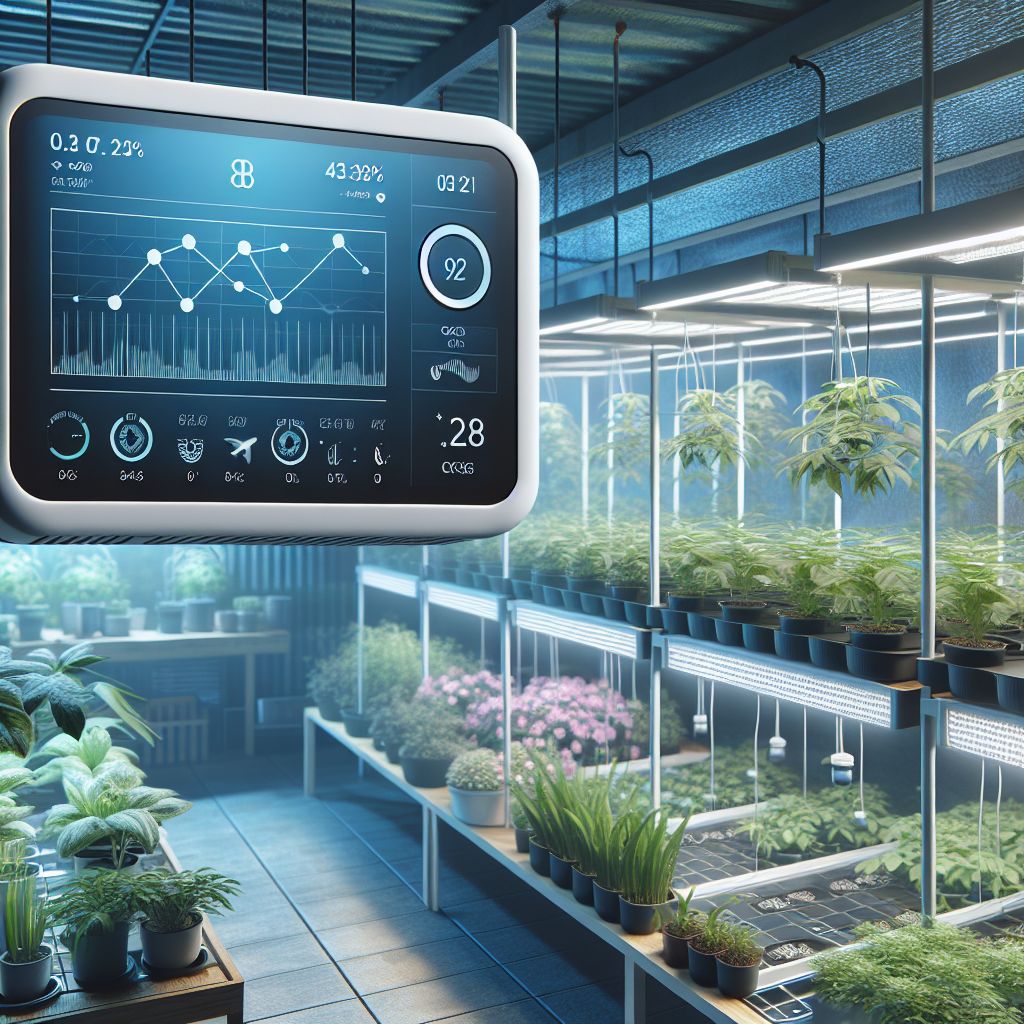Key Takeaways
- Discover how to use limited space to grow a high-yield garden with smart gardening techniques.
- Learn about vertical gardening, the perfect solution for urban gardeners with small spaces.
- Find out which vegetables and herbs give you the most bang for your buck in a compact garden.
- Explore smart irrigation systems and how they can save water and time.
- Understand the importance of companion planting and organic pest control for a thriving garden.
Embrace Eco-Innovation in Your Garden
Gardening is a living art form, one that allows you to connect with nature even in the heart of the city. And let’s face it, we could all use a little more green in our lives. That’s where smart gardening comes in. It’s all about making the most of your space and resources, so you can grow a lush, productive garden no matter where you live. So, roll up your sleeves, because we’re about to dig into some smart gardening tips that will turn your balcony, rooftop, or tiny yard into a green oasis.
What Smart Gardening Really Means
Smart gardening is not just about using tech gadgets, it’s a holistic approach to gardening that combines space efficiency, sustainability, and productivity. It’s about understanding your environment and choosing plants wisely, conserving water with the latest tech, and ensuring your plants are as healthy and bountiful as possible. It’s gardening with intention and intelligence.
Perks of High-Yield Practices
Why settle for a few measly tomatoes when you could be harvesting baskets full? High-yield gardening practices are all about getting the most out of what you have. This means selecting plants that produce abundantly, optimizing water usage, and ensuring your soil is rich and ready to support vigorous growth. Besides that, it’s about smart planning and planting, so every square inch of soil is used to its full potential.
Maximize Space for a Lush Harvest
Space is often the biggest challenge for urban gardeners, but with a few clever strategies, you can grow more than you ever thought possible. Let’s talk about how to make every inch count.
Choosing the Right Plants for Space Efficiency
The key to a high-yield garden is choosing the right plants. Opt for varieties known for their productivity and suitability to your climate and space. For example, cherry tomatoes and pole beans are great choices for small spaces because they grow vertically and can produce a large crop over a long season.
Here are some other space-efficient crops to consider:
- Leafy greens like spinach and lettuce can be harvested leaf by leaf, allowing the plant to keep growing.
- Herbs like basil and cilantro take up little space and can be continuously harvested.
- Strawberries can be grown in hanging baskets or towers, making them perfect for balconies.
Vertical Gardening: Growing Upwards
When horizontal space is limited, go vertical! Vertical gardening is a game-changer for those with small gardens. It involves growing plants upwards on trellises, walls, or even using stackable planters. This not only saves space but can also create a stunning visual display.
Here are some tips for vertical gardening:
- Choose climbing plants like cucumbers, peas, and some varieties of squash.
- Use sturdy structures that can support the weight of the plants as they grow.
- Ensure there’s enough sunlight for the lower levels of your vertical garden.
Success with Container Gardens
Container gardening is another fantastic way to make the most of a small space. Almost anything can be grown in a container as long as you have the right size pot and good soil. Containers are also portable, which means you can move them to take advantage of the best sunlight or protect them from harsh weather.
Companion Planting Strategies
Companion planting is the practice of placing plants together that can help each other grow. This can mean deterring pests, providing shade, or even fixing nitrogen in the soil. For example, planting basil near tomatoes is said to improve their flavor and help repel pests.
Marigolds are a gardener’s best friend. Not only do they add a splash of color, but they also repel nematodes and other garden pests. Plant them around the edges of your garden or in between vegetables for a natural pest control solution.
Now that we’ve covered some foundational smart gardening strategies, stay tuned for more in-depth insights on high-yield crops, smart gardening technology, and organic pest management in the next parts of this series. Your green sanctuary awaits!
Optimize with Smart Tech
Let’s talk tech! In today’s world, technology is not just for staying connected or entertained—it’s also for helping us garden smarter. By integrating smart technology into your gardening routine, you can save time, conserve water, and even boost your garden’s productivity. Here’s how to get started.
Water Wisely: Smart Irrigation Systems
Water is precious, especially in urban areas where resources can be scarce. A smart irrigation system can be a game-changer for your garden. These systems can be programmed to water your plants at the most effective times, reducing waste and ensuring your plants get the hydration they need without overwatering.
Most importantly, these systems can adjust based on weather conditions—meaning if it rains, your system can take a day off. This not only saves water but also helps prevent waterlogging, which can be detrimental to plant health.
Soil Intelligence: Sensors and Monitors
Healthy soil is the foundation of a thriving garden, and now we have the tools to keep a close eye on it. Soil sensors and monitors can track moisture levels, pH, and even nutrient content. This means you’ll know exactly when to water, when to adjust the soil pH, or when it’s time to fertilize.
Armed with this information, you can tailor your care to each plant’s needs, leading to stronger, healthier growth and, ultimately, higher yields from your garden.
- Moisture sensors can alert you when your plants need water, which is especially helpful during hot summer months.
- pH monitors ensure your soil is at the optimal acidity or alkalinity level for the plants you’re growing.
- Nutrient sensors can tell you if your plants are getting the right balance of essential minerals.
By taking the guesswork out of soil care, these smart devices help you to become a more efficient and successful gardener.
Apps that Make Gardening a Breeze
There’s an app for everything, including gardening. Mobile apps can help you plan your garden, remind you when to water or fertilize, and even provide advice on how to tackle common plant problems. They’re like having a personal gardening assistant in your pocket. For those looking to integrate technology with their green thumb, exploring smart gardening tools and devices can enhance the gardening experience even further.
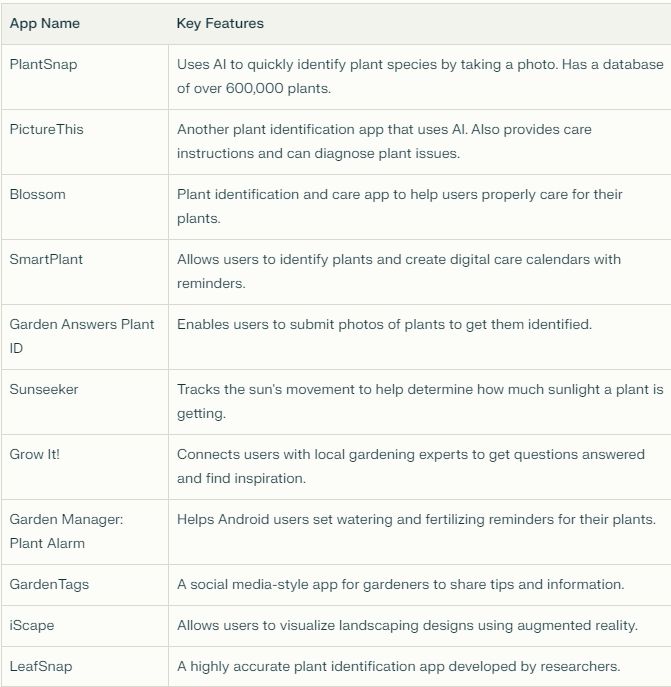
With features like plant recognition, watering schedules, and pest identification, these apps can simplify the gardening process and give you a little more peace of mind.
Organic Control: Pest Management the Smart Way
Pests can be a real headache for gardeners, but reaching for harsh chemicals isn’t the only way to deal with them. Organic pest management is about working with nature, not against it, to keep your plants healthy and your harvests plentiful.
Natural Predators and Companion Planting
One of the smartest ways to manage pests is by encouraging their natural predators to visit your garden. Ladybugs, for instance, love to feast on aphids. Planting flowers like marigolds or herbs like dill can attract these beneficial insects to your garden.
Companion planting can also play a significant role in pest management. Certain plant combinations can help deter pests naturally. For example, planting garlic near roses can help repel aphids.
DIY Organic Sprays and Solutions
If you do encounter a pest problem, there are plenty of homemade solutions you can whip up with ingredients from your kitchen. A simple mix of water and mild dish soap can work wonders against a variety of pests. Neem oil is another natural option that’s effective against pests and safe for plants.
Maintain Your Garden with Minimal Effort
Smart gardening isn’t just about maximizing your yield, it’s also about minimizing your effort. With the right strategies, you can keep your garden looking great with less work.
Automated Composting: Turning Waste into Gold
Composting is a fantastic way to recycle kitchen scraps and yard waste into rich soil for your garden. And now, with automated composting systems, it’s easier than ever. These systems can turn organic waste into compost much faster than traditional methods, without you having to lift a finger.
Mulching: Suppress Weeds and Retain Moisture
Mulching is another smart technique that can save you time and effort. A good layer of mulch around your plants can help retain soil moisture, reduce the need for watering, and suppress weeds. This means you’ll spend less time weeding and watering and more time enjoying your garden.

Smart Plant Care Routines
Creating a routine for plant care can streamline your gardening and ensure your plants get consistent attention. Let’s break it down into simple, actionable steps. For more insights, explore our guide on smart greenhouse setups.
Timely Pruning for Plant Health
Pruning isn’t just about keeping your plants looking tidy—it’s also about promoting healthy growth. Regular pruning can help prevent disease, encourage blooming, and even increase fruit production. Just make sure you’re pruning at the right time for each plant.
Scheduled Feeding for High-Yield
Feeding your plants is like giving them a regular health check-up. A scheduled feeding routine ensures your plants get the nutrients they need when they need them. This can lead to more robust plants and, you guessed it, a higher yield.
Remember, smart gardening is about making the most of what you have, whether that’s space, resources, or time. By using these tips and embracing smart gardening techniques, you’ll be well on your way to creating a high-yield, low-maintenance garden that’s as smart as it is beautiful. Happy gardening!
Harvesting and Storage for Year-Round Enjoyment
Now, let’s talk about the fruits of your labor—literally. Harvesting at the right time and storing your produce correctly can mean enjoying your garden’s bounty all year round. Here’s how to make sure not a single leaf or fruit goes to waste.
Best Practices for Harvesting Crops
Harvesting your crops at the peak of ripeness ensures the best flavor and nutrition. For most vegetables, this means they’re firm and vibrant in color. For example, pick tomatoes when they’re richly colored and slightly soft to the touch. Leafy greens, on the other hand, are best harvested in the morning when they’re still cool and crisp.
Here’s a quick tip: Regular harvesting often encourages plants to produce more. So don’t be shy—pluck those peppers and snip those zucchini flowers!
h
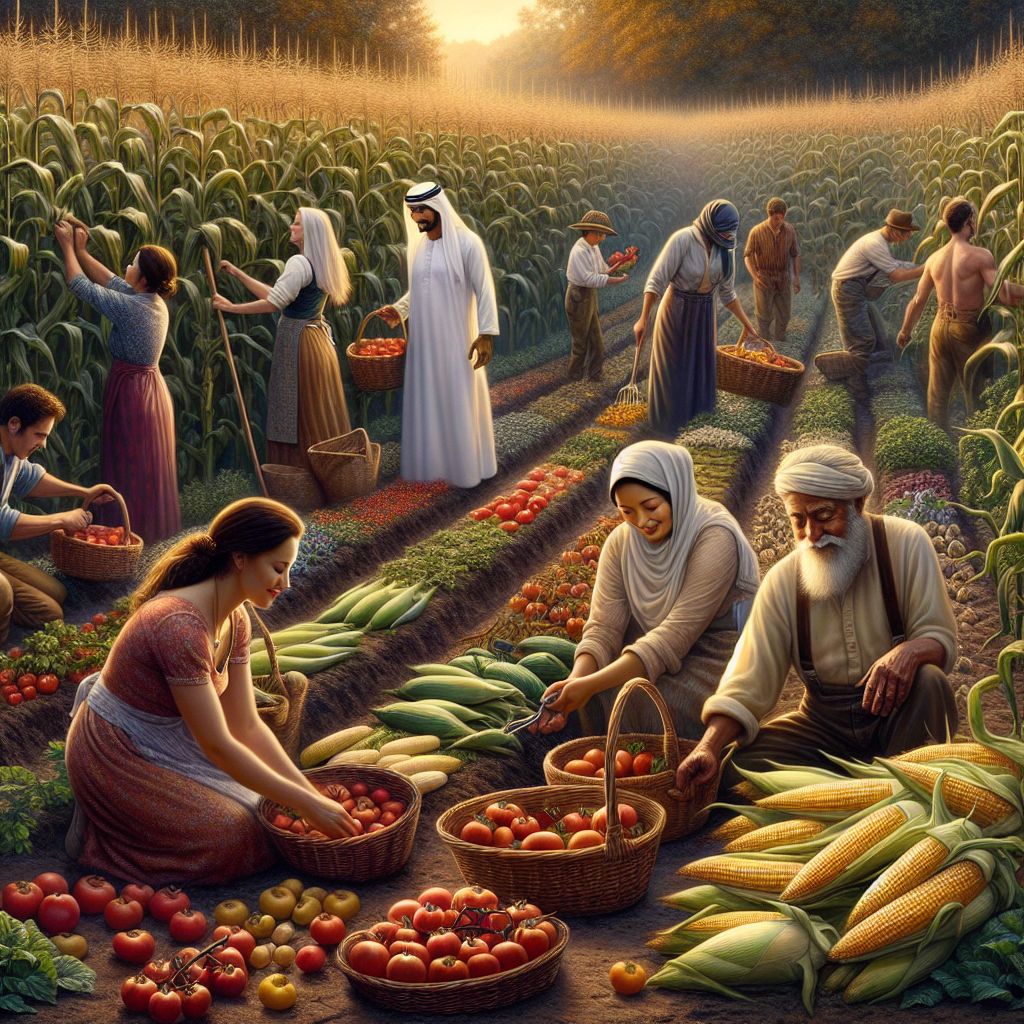
Preservation Techniques for Extending Freshness
Once you’ve harvested your crops, it’s time to think about storage. Proper preservation can extend the life of your produce and let you enjoy it for months to come. Here are a few methods:
- Canning: Preserve fruits and vegetables in jars to enjoy them out of season.
- Freezing: Many veggies and herbs freeze well and can retain their flavor for several months.
- Drying: Herbs and some fruits can be dried and stored in airtight containers.
Each method has its own set of best practices, so do a bit of research to find out which works best for the type of produce you’re growing.
Frequently Asked Questions (FAQ)
As a gardener, you’re bound to have questions. Here are some answers to common queries that might just help you along your smart gardening journey.
What is the most space-efficient crop to grow?
Herbs are the champions of space efficiency. They require little room and can be grown in small pots on windowsills or balconies. Leafy greens like lettuce and spinach are also great choices as they can be harvested leaf by leaf, allowing the plant to continue growing.
How do I select the best smart irrigation system for my garden size?
Choose a smart irrigation system based on the size of your garden and the types of plants you have. Drip systems are great for small to medium gardens, while larger gardens might benefit from a more sophisticated system with multiple zones and sensors.
Can smart gardening tech be affordably integrated into my existing garden?
Absolutely! Start small with a basic moisture sensor or a smart timer for your hose. As you become more comfortable, you can add more devices. Remember, even the simplest tech can make a big difference in your garden’s health and yield.
What are the best pest management practices for organic gardening?
Organic pest management relies on prevention, so keep your garden clean and your plants healthy. Introduce beneficial insects like ladybugs, and use natural deterrents like neem oil or homemade insecticidal soaps. Remember, a diverse garden is a healthy garden, so mix up your plants to keep pests guessing.
How do I ensure a high yield from my vegetable garden?
To ensure a high yield, start with good soil rich in organic matter. Use companion planting to maximize space and deter pests. Make sure your garden gets plenty of sunlight, water wisely, and feed your plants regularly with a quality organic fertilizer. And don’t forget to harvest often!


